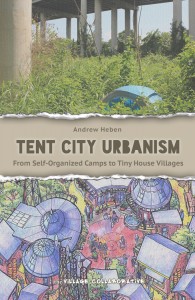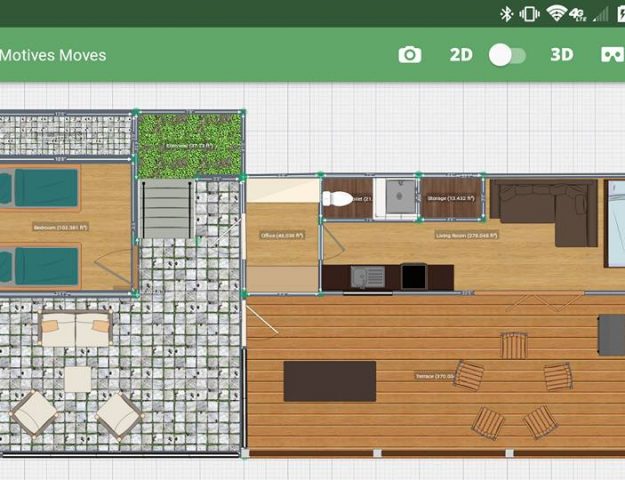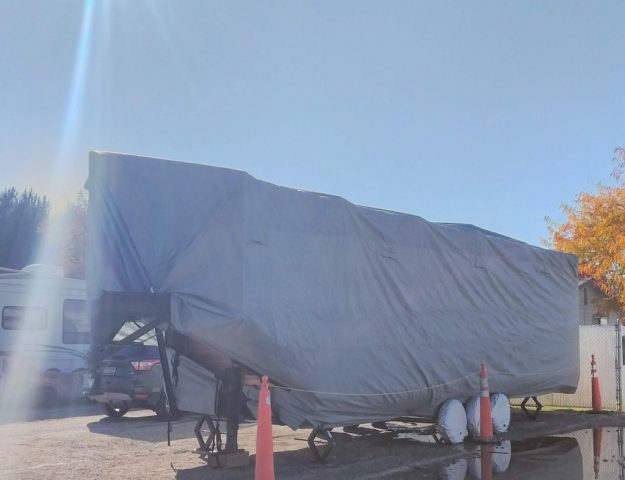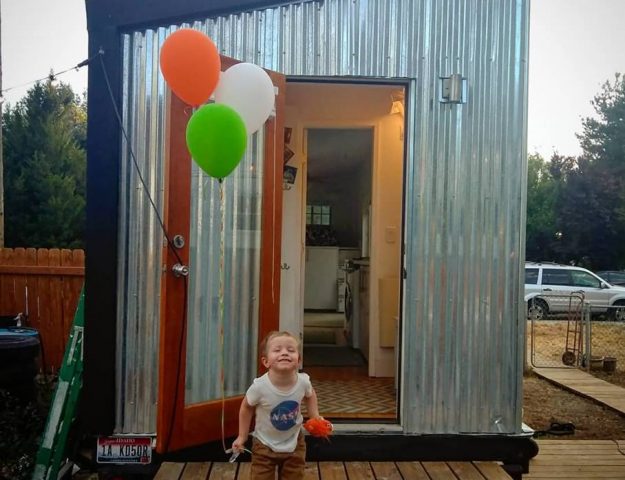Tiny Houses as ‘Homeless Housing’ Part II
I originally posted a couple weeks ago expecting a huge uproar on this topic (you can see the post HERE). My point previously was that this is a complicated issue and I had concerns about making backward progress when trying to legalize tiny houses this way. Of course I threw in a few [some not well thought out] opinions too. I heard very little kickback, which surprised me honestly. Well, it just took a little time before one of the projects I was sure would feel ‘wronged’ by this got a hold of it and then the kickback started. I really enjoyed the conversations, though some were a little offensive to me (they made it clear that I had offended them as well, though I did not mean to!), that just goes to show how dearly this issue is held though. Before I get into this I just want to reiterate, I am in no way against homeless people or these developments, I know there is a huge problem that needs to be addressed in this country, these developments simply did not pencil out in my head [from the developers side I admit, that is the side I work from]. There were a couple replies that have made me really rethink things, primarily from Andrew Heben, author of Tent City Urbanism so I wanted to post my new thoughts and hear from others on this issue.
In a nutshell, do I think tiny houses are the right path to take to address homelessness, I am not qualified to answer that nor do I think there is a one size fits all answer, I divert to trusting the people working in that area, they have a lot more knowhow than me. After this discussion do I think these developments are in any way a threat to others wanting to live in a tiny house? No, I don’t.
Point one. The main reasons for the change of heart are a direct result of an email conversation with Andrew who is savvy enough to see through my random clusters of run-on sentences based on vague worries and be able to address my actual concerns which revolve around finances and codes. I am a bit embarrassed for posting the previous post before thinking the whole way around the financial issues but I honestly don’t think I would have got there without making that post. Right now it seems the assistance programs for ‘homeless housing’ (a complete oxymoron) have a certain fee schedule set up that they just pay. The big ‘ah-ha’ moment for me in this conversation was this reply to my concerns (I’m just going to copy/paste because Andrew is better at words than I am):
Macy, I think we are finally getting to the pre-eminent benefit of the tiny house model over multi-family housing (at least at this point in time). Before we were talking about capital costs, and sure we can agree to disagree on that. But the reduced operating and maintenance cost with a tiny house makes your question of government assistance vs. occupant payment less relevant than it has been in the past.
Section 8 housing requires a resident to pay 30% of their income toward rent, and government subsidy picks up whatever is left of the market rate rent.
Problem: subsidies are underfunded to adequately meet this demand.
Solution: build a form of housing that is not dependent on Section 8 subsidies
I believe “homeless housing” is an oxymoron. The whole point of the tiny house movement is that there is very little to pay for once you have it, right? A home free from rent and debt. That is assuming you can find a free place to put it. So these projects you are referring to can be done WITHOUT government subsidy AND WITHOUT residents paying rent BECAUSE of the low cost nature of the tiny house model. Costs the taxpayer nothing, only those who want to contribute.
If you can figure out a way to do something similar with denser, multi-family housing that would be beyond cool. Because your right in that density is good, and the tiny house village would not necessarily be a good fit for a place like say NYC. But currently, it’s not possible. Tiny houses are a lot less complex, a lot more human scale, and that has allowed average people to wrap there minds around it and find ways around more stringent requirements in other types of development
This was ‘ah-ha’ for me because in the development world I have always cursed clients for only concerning themselves with upfront costs because you can put a little more upfront and pay a lot less in maintenance costs. The developer though, doesn’t generally care because they build and rent out, they don’t actually pay the operation costs and they generally don’t want to pay more up front to save anyone else money downstream. Clearly I have been conditioned to only think about the up front costs as well when the current model of housing homeless individuals is largely operational costs. Andrew makes a VERY good point about this model of housing being mutually beneficial on all levels, even IF the upfront cost was a little more than other models. (Some other commenters make very good suggestions for alternative housing options that I like, particularly Parker, thank you all for posting your thoughts!)
Now, point two. In the last post I stated that the tiny houses couldn’t be built for less than about 25k on a good day. I was talking generally and as if these were a one size fits all solution, hiring a contractor and making this a scaleable type of project. I stand by that, you can’t hire a contractor and build out these houses (to codes) for less than that and likely it would be more. Just like when you buy a tiny house it is MUCH more than if you build it yourself. My error was taking out the fact that you CAN build them yourself. It doesn’t matter my rational for getting there, the fact is you DON’T have to hire contractors to build these, you don’t HAVE to use new materials, you don’t HAVE to do lots of things that all of us have been conditioned to think we have to do. Sure it may add man-hours to a job but if you have more hours available and less money you can build them for much less. I was assuming, since it is a governmental funded housing project that it would have to be built through ‘legit’ channels, fully to code attached to a contractors license etc. I have gathered that that is a real challenge for these developments in addition to the exact same challenges all of us tiny house people are facing. They have men and women to do the work, they have the ability to find sponsorships, they have people actively working on codes on a much greater scale than most of us individuals and these projects are finding exceptions to challenges which are allowing people to have roofs over their head that they can afford In ADDITION TO relieving long term costs of supplementing section 8 housing. I am impressed and a little bummed that I didn’t look further into this issue prior to posting. Though, I am glad I posted anyway so that it can open up this conversation.
Point three, codes! My biggest concern and the one that prompted me to even write the last post was that I was fearful of these projects getting exceptions written into codes for this ‘special circumstance’ would limit the ability to cross over to other circumstances ie. non-low income). (I think a lot of people took that to mean I was anti low income and pro upper/middle class, that is not even close to the reality, sometimes I am just bad at writing and/or getting my point across.) I could have just as easily reversed it and said I am afraid if we get these okayed for the middle class then they would not be allowed for low income. Just the fact that I can reverse it like that shows how silly that argument is. The reservations are and were based on real life experiences that I have experienced in my life though. I was only ever a party to the result though, not the process that led to it and therefore I do not know if they were caused from a code standpoint or a developer standpoint. I was just left with this concern. So, I will once again copy and paste the conversation with Andrew because I think he states it really simply and clearly, enough to alleviate my concern completely:





Andrew is very intelligent and I feel is an extremely qualified rep for this subject matter. I am glad you got to talk to him. His book and an accompanying article will be featured in TINY HOUSE magazine Issue 21 slated for release the 3rd week of August.
Like you Macy, I have had varying thoughts on this issue ranging from “man, I am a jerk” to “no wonder people don’t like the tiny house premise” to “Isn’t this completely spot on? housing for all no matter?”
It is not easy. That is all there is to it. Not easy.
I appreciate your post(s) though and allowing us to walk through the mindset and process with you.
-D
who ever is building them could also enlist the people that will be using them and get skills to help build more. The high schools that have shop classes could also use a projects and build one a year to donate and be learning skills at the same time. I would love to have one. My house 1400 sq ft was 162,500 ten years ago and now 132,000 with payments and roof, windows, hardwood floors I put in and new appliances that’s about 50,000. I will never get my money back out of it, so I sit here and just make payments waiting for the market to go up.
Excellent 2nd posting on this subject Macy! I am looking forward to reading more of Andrews work in the Tiny House Magazine. It is a complex issue and there are many reasons that people choose tiny/small house living. On my personal journey, the more I learn, the more determined I am to build a Tiny House. Recently unemployed, the past few years underemployed and struggling to keep the rented roof over my head, I am embarking on the adventure of being self-employed. Even though a small (350-650 square foot) house would suit me better for the space I need, I know I will find a way to make a tiny foot print work! If I can find funding for my tiny house (at least enough for the exterior portion and trailer) through a crowd funding source, I can survive and not be camping in the woods somewhere. I feel confident that I can work on the inside myself. So I am looking forward to a hopeful future because of the Tiny House Movement. Unfortunately, most people have the misguided notion that there are all these government programs out there to help people. It is only when you find yourself in desperate need of some of these government services, you find that you do not qualify, they are out of funding, you do not live in the right area, they do not help with that particular need that you have, and the list goes on and on. It makes you seriously wonder where the millions (and billions) of our tax money for these programs go, and are they helping anybody?!? People in trouble need a hand up, not a hand out, and I believe the Tiny House falls in that category. Keep the conversation going!
Various communities have similar needs whether you’re a tiny house enthusiast, organic farmer, prepper or off-grid. Outdated laws, building codes, planning ordinances and zoning do not meet the lifestyles of a changing society in a troubled economy. A collaborative seems to be the best idea to promote progress and share experiences about successes and failures. To point, we can’t afford to preach exclusion in efforts to find innovative and alternative approaches to affordable housing. It’s an issue we all have in common. A united effort spearheaded by critical leadership of the various groups that outline the central concern would offer greater stability and credibility toward lobbying efforts and developing new regulations. Under unity we can garnish far more influence working together then going it alone as independent organizations. We have more in common then strategies and more worth then individual legacy of affordable housing alternatives and economic sustainability.
We have proposed a drop file location for a collection of data on guideline progress with respect to zoning, planning, codes and regulations; with the express idea of creating open source for sharing ideas and information. The benefits of such open source would greatly enhance each member’s efforts towards research and development for a community or individual as well as a launching a platform for global awareness and change. We are not alone in this thinking and believe it time for a movement to become an organization of critical leaders who sponsor progressive chance to our present policies. The Village Collaborative agrees and offers on its site “Village Resources” Link. http://www.thevillagecollaborative.net/#!resources/c23q6 It’s a Google Drive folder where representatives from various projects can add key documents, such as the ones described. They’ve started with Opportunity Village Eugene and have invited some other folks to add information about their projects. We will be adding ours to the drive as well.
It’s wonderful to see such open communication and honest expression of ideas. Beyond complexity, solutions vary but unified commitment grows to change not only dated codes, but dated opinions. The tiny house villages are “opening the doors to similar communities for all income levels.” If we had more open doors welcome to critical discussion about solutions from a larger diverse network of influential groups – we might well find common solutions to codes and development.
I think that big push came from several person on the front line of the movement to end at least 70% of homelessness in the next ten years out this way in Oregon. I see a plan, I have see also my own path. Never give up hope, never give up, dignity is the most powerful definition of a home no matter how big, or how it is given to you, we have opportunity village modeled after other successful programs.. I really can say a lot about the spark needed to have us all rise. We talk out here, roll ideas around, sometimes we go on attack but usually as I sad to them it was an moral victory but in the end what was accomplished, forward thinking, out of “The BoX’ homeless joke.. What was accomplished? What part of a the four part movement based non-violent as out lined by MLK “Letter from Birmingham” jail. I am not telling you a group effort was not a well deserved feather for homeless integrity, (that is a noble expression of compassion.) but What was accomplished? I say this in real response to the intelligent thinking person that each one of you is, it is a concept that each of us adds to the long term betterment of our fellow. Each of us has wonderful idea’s along side the frustration of such an article. I’m saying collectively we could of created such posts that each one would not just be a moral and ethical template, it would give back, a little piece of the puzzle, an idea along the road to knocking someone off their high perch, an idea that can be grown upon. I look as most situations concerning such social concerns as a way of not only giving a whole hearted response in kind, but leave behind a idea.. (I call it a path, each has our own out and back “HOME” as I used to say in the “Hood” Whiteaker Neighborhood, the Game”.. finding it and the help.) I leave you again with expansion, if you haven’t read this, it is still my top Blog
Mayor Kitty Piercy homeless FB conversation post March 17 2014
Interesting. I say interesting because I have to look at it from all angles, one the past life on the streets long enough to endure cold winters, warm summers, drug addition, in and out of jail, rebuilding again to loose it another time. Homelessness and the possibility of it all to real. So first brothers and sister on the street now even though your numbers have grown and many of you need extra help and I was a “King’ of the ‘hood’ Whiteaker Neighborhood by the end of my time with lots of kids calling me ‘Uncle Thor’ You can become ‘King” in a good way even though I was under ground basically you just instill a better way in the street code and help some kids head in the right direction by being first to go. Also You got a set of boyz that clank. OUT Okay the next step. I had been kicked out, just got of jail losing all my stuff (case dropped incidents related I can’t ruin my book pivotal point) So I’ walking down Willamette and take a left turn in to Lane Community College. I start classes 10 days later. Okay that is how I got out. I’m now h/c so I take that part of the plight of homelessness in. I also have to add in their general ability levels, social ability, education ability, needs, medical, general over all something kicked their but and put them on a bad path. I hope I covered every angle there. The next step is communication which has taken place over some time, planning after study of other models, action what we see above. Even greater ideas have come across the table but since we are talking about a city response to it we have a pretty powerful one. okay I have come this far, so I’m going to lay it all on the table. Each person has an ability, each person who has disabling medical needs will soon be in housing living off SSD (Lawyers will realize what I am telling you.$$$$) Each one of these people in some way is a financial bonus if we help. If we realize the labor financial pool available, if we realize the human potential available, if we have as said above an “End Game” strategy using what we have created as a community to cycle people back into housing faster than they are loosing them. Then all this will mean something great. Yes I agree we can call this still year one. I like to think 5 years from now when this system is so well tuned that the only few living Characters like “Crazy Charlie” my favorite street nut often to be found around the hood, and as always travels during the summer chasing the shows and sun. I’m saying we are just beginning to walk. It is right we should look around and see the new possibilities. Chef John “The Ghetto Gourmet” aka THOR .
Posted by “The Eye of THOR” at 12:36 AM
Email This
BlogThis!
Share to Twitter
Share to Facebook
Share to Pinterest
4 comments:
“The Eye of THOR”May 14, 2014 at 10:51 PM
We look around read If I ran the “Zoo and apply.”
Vets, in homelessness open to $$ from their service, Respect.
People who suffer and see each day as a spinning array of events to powerful to over come, and that one person who they can talk to. You all are out there, here a simple instruction, humanity in compassion in long thinking in community effort. I see no backward, only growth. This is the bottom up guy say their are so many of us, almost a great army of people, a great army of humanity, both in a dance moving toward a reality. A new dawn. Seems to be a noble thing giving where we are today and in that tradition continue, an inspiration in thought ideas, possibilities, be inventive with this ARMY of AMERICANS. THOR
ReplyDelete
“The Eye of THOR”July 18, 2014 at 3:48 AM
We are seeing so many parts coming together finally, the death toll will go down, neighborhoods will grow, people will come back out of their homes, new homes, new lives, and they will have a spark. The spark of life, of dignity, of inspiration, those who made these live start again, Kitty Piercy, Eugene City Council, our own “Mitch Snyder” resurrected in Pastor Dan Bryant, and most of all the little person, on the front line. You see with all these sparks, inspiration, hope, love, a great fire will be born, a great new movement, “American Fire of Inspiration” To those blessed, “Do good deeds, give time freely, work everyday to work, give us your spirit, your dreams, make them come alive. This is just part of a greater puzzle coming together that will change everything in 10 years, the very Heart of America will beat again in that time. We meek, We dispossessed, We living, We dreamers. We Lions! THOR
ReplyDelete
“The Eye of THOR”July 20, 2014 at 8:51 PM
This is what will happen over the next 50 years. The first 10 will be dealing with 2 generations of “Drug War” collateral damage. We will begin to hear stories like told on the movie “The Counselor.” first hand. We will be horrified to the bone, and then when realize the suffering we will move on it. The need to curb this social sickness will become the biggest movement in the 2100st Century, coupled with lifting the homeless, dealing with prevention & treatment as the new community comes out and the streets fill with people making a difference, the people will come back out. The musicians, the brothers, the OSG’s the whole of the community from Cops to even the Politicians. Weed will pay the bill for this change in many places where the “End Game” can be seen. It has gone so far the only way we will lift this will be creating the America’s. (Sounds wild. I know) We are just in the beginning, lifting homeless, poor where ever they are and most of all what will drive this great change in us. It will be the suffering of Children.
Lions Rise!
THOR
ps. “Letter from Grave” out lines Martin Luther King 4 parts of non-violent struggle, Gandhi , Nelson Mandela, so on.. Chef John aka THOR The Eye of Thor
This is on debate tonight on KATU news. http://www.katu.com, everyone who commented here should comment on there when they post it on the website. I just checked at 5:30pm Pacific and they hadn’t posted it on the website yet.
http://microcommunityconcepts.com/ they are talking about it as an intermediary step, the people would pay rent for their space. They also need an initial start up fund.
http://www.katu.com/news/local/Big-problem-tiny-solution-272240531.html